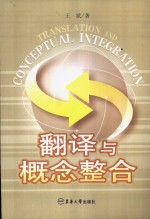

翻译与概念整合 英文版PDF电子书下载
- 电子书积分:10 积分如何计算积分?
- 作 者:王斌著
- 出 版 社:上海:东华大学出版社
- 出版年份:2004
- ISBN:7810386093
- 页数:246 页
Chapter 1 Introduction 1
Contents 1
Acknowledgments 1
Preface 1
前言 1
Chapter 2 Concepts of Translation and Meaning 9
2.1 Transfer is a Precondition of Translation 9
2.2 Translation and Metaphor 11
2.2.1 Translation Does Not Move Physically 12
2.2.2 The Meaning Transferred is Not Something 12
Objective 12
2.3 How Translation Transfers 19
2.4 Concept of Meaning Revisited 21
2.4.1 Objective Meaning Versus Subjective Meaning 23
2.4.2 Necessary Biology and Necessary Experience 26
2.4.3 Embodied Mind Through Cheng Chung-ying s 30
Digestion of Yijing 30
2.5 Negotiation:Conceptual Integration 31
Chapter 3 Perspectives on Translation Studies 37
3.1 Macro-view:Cultural Studies Approach 39
3.1.1 Ideology,Power and Translation 39
3.1.2 Historical Translation Research 53
3.1.3 Translation,Literature and Philosophy 55
3.1.4 Descriptive and System-oriented Approaches 56
3.2 Micro-view:Linguistic Studies Approach 61
3.2.1 Product-oriented Translation Research 61
3.2.2 Process-oriented Translation Research 78
3.2.3 Methodological Oppositions in Translation 83
Studies 83
3.3 What Is Missing in Current Theories 92
Chapter 4 Relevance Theoretic Approach Revisited 96
4.1 Relevance as Inferential Nature of Communicationwithin a Culture 96
4.2 Relevance impotent in Cross-cultural Transfer 101
5.1 A Synoptic View of Conceptual Integration 107
Networks(CINs) 107
metaphoric structures 107
Chapter 5 Conceptual integration networks and 107
5.1.1 Introduction 108
5.1.2 The Network Model of Conceptual Integration 112
5.1.3 Optimality Principles 114
5.1.4 Satisfaction of the Optimality Principles in 115
Some Basic Kinds of Conceptual Integration 115
Networks 115
5.1.5 Additional Dimensions and Further Results 133
5.2 Blending Versus Metaphor 135
5.2.1 Metaphoric Structures 135
5.2.2 BT Distinguished from CMT 138
5.2.3 Blending Models and Metaphor 146
Chapter 6 Language Expression:Blend of Conceptual 148
Structure with Grammatical Construction 148
Chapter 7 Translation in Metaphoric Structures in 151
Terms of Blending 151
7.1 On the Possibility of Translation 151
7.2 Translation Mismatches at Lexical Level 153
7.3 The Translation Process from the Grammatical 157
Blending Point of View 157
7.4 Equivalent Transfer and Blending Models 170
7.5.1 Proverb:Symbol of a Culture 174
7.5 Mismatches in Proverbs 174
7.5.2 How Mismatches Occur in Proverbs 189
Translation 189
7.6 Troubles Made by Equivalent Transfer As a 196
Principle 196
Chapter 8 Translating Through Blending 199
8.1 Translation in Category 2 200
8.2 Translation in Category 3 209
8.3 Translation in Category 4 210
Chapter 9 Planning and Blending 212
9.1 Translation as a Means of Planning 212
9.2 Blending Through Asymmetric Two-sided Network 216
Chapter 10 Concluding Remarks 219
References 222
- 《英汉翻译理论的多维阐释及应用剖析》常瑞娟著 2019
- 《卓有成效的管理者 中英文双语版》(美)彼得·德鲁克许是祥译;那国毅审校 2019
- 《当代翻译美学的理论诠释与应用解读》宁建庚著 2019
- 《社会文化系统中的翻译》姜秋霞,杨正军 2019
- 《2020考研英语大趋势 历年真题完形+翻译+新题型精讲精练》商志 2019
- 《AutoCAD 2018自学视频教程 标准版 中文版》CAD/CAM/CAE技术联盟 2019
- 《跟孩子一起看图学英文》张紫颖著 2019
- 《潜文本的阐释与翻译》刘早著 2019
- 《财经新闻翻译实践教程》胡婉,黄剑,王旭泉主编 2019
- 《AutoCAD机械设计实例精解 2019中文版》北京兆迪科技有限公司编著 2019
- 《中风偏瘫 脑萎缩 痴呆 最新治疗原则与方法》孙作东著 2004
- 《水面舰艇编队作战运筹分析》谭安胜著 2009
- 《王蒙文集 新版 35 评点《红楼梦》 上》王蒙著 2020
- 《TED说话的力量 世界优秀演讲者的口才秘诀》(坦桑)阿卡什·P.卡里亚著 2019
- 《燕堂夜话》蒋忠和著 2019
- 《经久》静水边著 2019
- 《魔法销售台词》(美)埃尔默·惠勒著 2019
- 《微表情密码》(波)卡西亚·韦佐夫斯基,(波)帕特里克·韦佐夫斯基著 2019
- 《看书琐记与作文秘诀》鲁迅著 2019
- 《酒国》莫言著 2019
